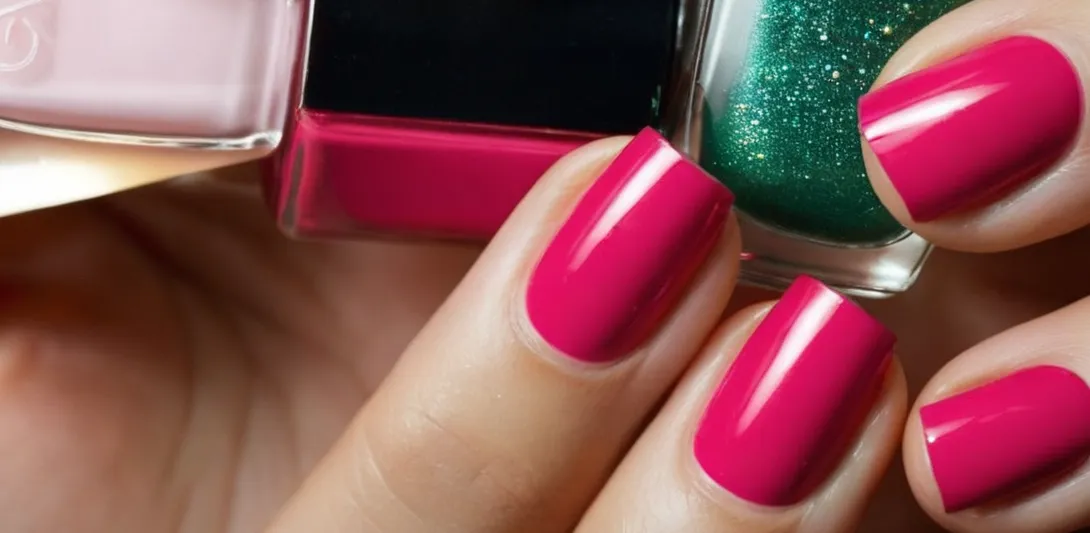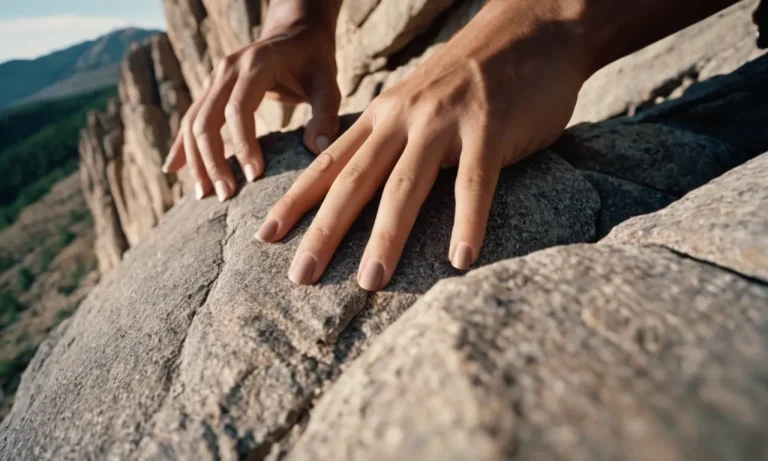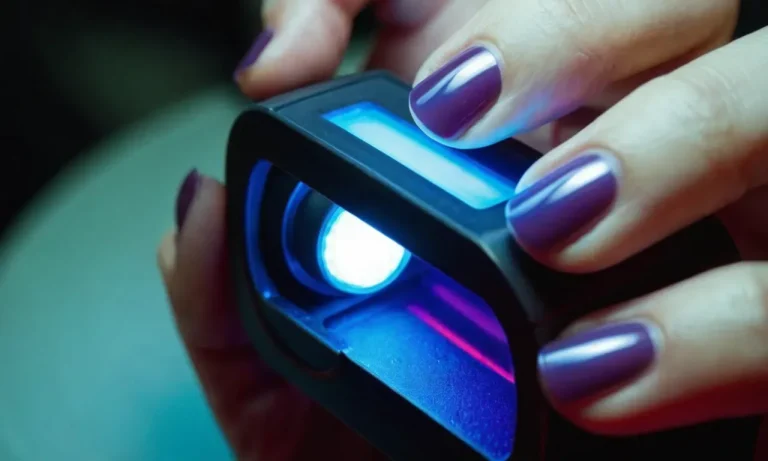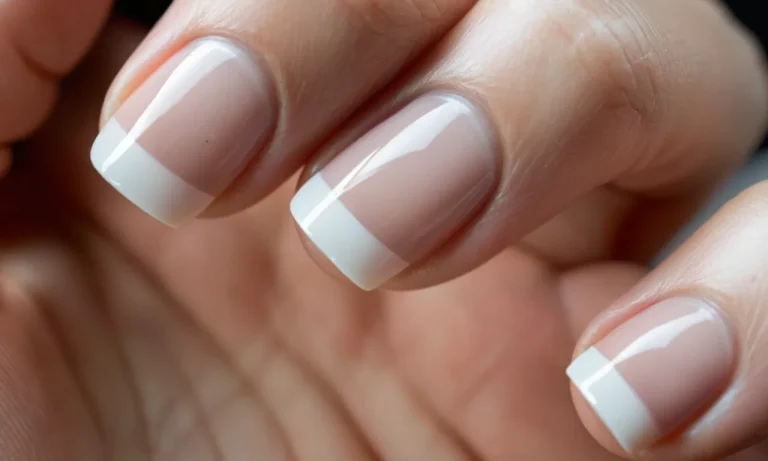Can You Get A Manicure With Acrylic Nails?
If you already have a set of acrylic nails on, you may be wondering if you can still get a manicure. Getting regular manicures is an important part of acrylic nail care and maintenance. A proper manicure will leave your acrylics looking fresh and well-groomed.
If you’re short on time, here’s a quick answer: Yes, you can absolutely get a manicure if you have acrylic nails. Manicures not only make your nails look great, but are also vital for the health of your natural nails under the acrylics.
In this comprehensive guide, we’ll cover everything you need to know about getting a salon manicure with acrylics or doing your own manicure at home. We’ll discuss the benefits of manicures for acrylic nails, what to expect during a salon visit, tips for DIY manicures, and more.
The Benefits of Regular Manicures for Acrylic Nails
Keeping Cuticles Tidy
Getting regular manicures is crucial for keeping cuticles looking neat when wearing acrylic nails. The cuticle is the thin layer of skin that surrounds and protects the nail bed. Over time, dead cuticle skin can build up and look unsightly around acrylic nails.
A manicurist will gently push back and trim off any excess cuticle during a manicure appointment, leaving the area looking clean and well-defined.
Removing Lifted Edges
Acrylic nails can sometimes lift slightly off the natural nail over time. This lifting creates gaps and raised edges that allow dirt and bacteria to get trapped underneath the acrylic. Having a manicurist file down and re-adhere any lifted edges during a manicure helps prevent lifting and keeps nails looking flawless.
Rehydrating Nails
The acrylic powder and liquid used to create acrylic nails can dry out the natural nail over time. Regular manicures allow nail technicians to nourish nails with moisturizing creams, paraffin wax treatments, and cuticle oils.
This hydration helps keep natural nails strong and healthy underneath the enhancement.
Maintaining a Professional Look
A set of acrylic nails should fill the entire natural nail, creating a seamless enhancement that looks like natural, healthy nails. As the natural nail grows out, a gap between the acrylic tip and cuticle will develop, giving nails an unprofessional, unfinished look.
Manicures every 2-3 weeks allow for safe removal of grown out product and a fresh application to maintain a polished appearance.
What to Expect During an Acrylic Nail Manicure
Soaking and Cuticle Care
The first step in an acrylic nail manicure is to soak the natural nails in a bowl of warm water for 5-10 minutes. This softens the nails and makes it easier to push back and trim the cuticles. After soaking, the nail technician will use cuticle clippers and a cuticle pusher to gently remove any excess cuticle growth around the base of the nails.
This prevents hangnails and cleans up the nail bed for a tidy look.
Filing and Shaping
Once the cuticles are tidied up, the nail technician will file and shape the natural nails. They use coarse nail files and buffers to even out the length and shape of the nails. Filing removes any rough edges and thins out the nails slightly so the acrylics can adhere properly.
The nails are filed into the desired shape, usually square, oval, or squoval (square with rounded edges).
This filing process is very important because it creates the foundation that the acrylic nails will be built upon. Taking the time to get the right shape will ensure that the acrylic enhancements look natural and seamless.
Polishing the Nails
Before applying acrylic powder and liquid, the natural nails are polished with either a primer or dehydrator. Primers create a tacky surface for the acrylic to stick to, while dehydrators remove oils from the nail plate.
Either option preps the nails for acrylic application and helps the product adhere strongly and last longer.
Some technicians may also apply a clear base coat polish to the natural nails first. This creates a smooth surface and protects the nails from the chemicals in the acrylic liquid.
What Products Are Used?
There are a few key products used to apply and shape acrylic nail enhancements:
- Acrylic powder – A polymer powder that provides strength and structure.
- Acrylic liquid – A monomer liquid that when combined with the powder, causes a chemical reaction that hardens and bonds the product to the nail.
- Nail forms – Shaped paper or plastic guides that are fitted under the nail to mold the acrylic into the desired extension length.
- Nail primer/dehydrator – Prepares the nails for acrylic application.
- Nail files and buffers – Used to refine the shape and smooth the surface.
The products are specially formulated for use together to create durable, natural looking acrylic nails. The nail technician is specially trained on the right techniques to apply, shape, and polish the acrylics for a beautiful manicure.
Tips for Doing Your Own Manicure at Home
Gather Your Supplies
Before giving yourself a manicure, make sure you have all the necessary supplies. You’ll need a nail file, nail clippers, cuticle remover, cuticle pusher, base coat, nail polish, top coat, cotton balls, nail polish remover, and hand lotion or cuticle oil.
It’s helpful to keep these items together in a little manicure kit so everything is easily accessible when you need it. You may already have many of these supplies at home.
Remove the Old Polish
Start by removing any old nail polish from your nails. Use a cotton ball soaked in nail polish remover to gently wipe the color away. Take your time and be patient during this step—rushing can damage the nail bed. Make sure all traces of color are gone so you have a clean slate to work with.
Tend to Your Cuticles
Healthy cuticles are key for a put-together manicure. Apply some cuticle remover to the cuticles and let it sit for about a minute to soften them up. Then, gently push back the cuticles with the cuticle pusher—don’t cut them.
Finish by massaging some cuticle oil or hand lotion into the nail bed to hydrate the nails and cuticles.
Shape and File
Use the nail clipper to trim each nail into the desired shape and length. Many people like to keep their nails short for a classic, clean look. Be careful not to cut the nails too short, which can lead to hangnails. Next, use the nail file to smooth out any rough edges.
File in one direction starting from the outside corner of the nail toward the center. File gently to avoid weakening the nails.
Apply New Polish
The fun part is choosing a fun color and starting the polishing process! First, swipe the base coat onto each nail. Let it dry completely before moving onto the next step, which prevents smudging. Then apply two thin coats of your chosen nail polish, letting each coat dry in between.
The two coats help the color look rich and even. Finish with a top coat, which helps the manicure last longer without chipping. Let it dry thoroughly before using your hands.
With the right supplies and a little practice, you can give yourself a salon-worthy manicure without leaving home. Taking good care of your nails will keep them looking their best. 💅 Luckily, manicures and acrylic nails go hand-in-hand, so you can still rock a fierce set while keeping your natural nails in tip-top shape underneath.
Be patient, take your time, and enjoy the relaxing process of beautifying your hands.
Aftercare Tips for Acrylic Nails Post-Manicure
Avoid Chipping
Chipping and cracking are common issues with acrylic nails. Here are some tips to help avoid chips after your manicure:
- Use your hands gently and avoid using them as tools. Things like opening soda cans and prying off jar lids can lead to cracks.
- Wear gloves when doing household chores involving chemicals or water. The gloves create a protective barrier.
- Apply cuticle oil daily to keep the nails and skin hydrated. Jojoba, vitamin E, and coconut oils work well.
- Avoid nail picking and peeling. This can pull up the acrylic and make it more prone to cracking.
Getting regular infills every 2-3 weeks will also help maintain the acrylic and prevent breakage. Let your manicurist know right away if you notice any cracks forming.
Use a Top Coat
A good top coat is essential for protecting acrylics. Top coats help seal in color, add shine, and prevent chipping.
Use a fast-drying top coat formulated for acrylics. Brands like OPI, Essie, and Gelish make reliable options. Apply it after your manicure and reapply every 2-3 days or when you notice dullness setting in. You want to keep the top coat fresh.
Quick dry top coats are useful for sealing in your manicure on the go. They help harden the polish quickly after application. This prevents smudging and dents.
Avoid using old or thickened top coat, as this can actually make chipping worse. Replace your top coat every 2-3 months for best results.
Moisturize Your Skin
Hydrated skin helps prevent lifting and cracking with acrylic nails. When skin is dry and calloused around the nail bed, the acrylic is more likely to separate and break.
Apply hand cream daily, focusing on the cuticles and nail beds. After washing hands, pat dry gently and immediately apply moisturizer. Shea butter, coconut oil, and ointments work well for very dry skin.
You can also apply cuticle oil 2-3 times per day. This conditions the cuticles and prevents painful cracking. Carry a small bottle in your purse for touch-ups throughout the day.
Exfoliate skin weekly with a scrub to get rid of dead cells. Soak fingers in olive oil once a week to deeply hydrate the nails and cuticles.
Avoid harsh soaps and sanitizers which strip away natural oils. Wear gloves when cleaning and use gentle, moisturizing hand soap.
How Often to Get Manicures for Acrylic Nails
When you have acrylic nails applied by a professional nail technician, you’ll need to come back to the salon on a regular basis for fill-ins and maintenance. Getting timely manicures is crucial for keeping your acrylics looking fabulous and avoiding damage or lifting.
Every 2-3 Weeks
Most manicurists recommend returning for a fill-in appointment every 2-3 weeks when you first get a new set of acrylics. As your natural nails grow out, a gap forms between the acrylic tip and your natural nail bed.
Getting a fill-in helps bond the new natural nail growth to the acrylic and prevents cracking or lifting.
Fills involve trimming and shaping your acrylics, then applying fresh acrylic product to bond the regrowth area. They usually take less time than a full set. Going longer than 3 weeks between appointments increases the risk of catching, cracking, or losing an acrylic nail.
Look Out for Lifting
In addition to regular maintenance visits, also watch out for early signs of lifting. Lifting occurs when the acrylic bond to your natural nail weakens, causing a separation between the artificial and real nail. It appears as a small white gap near your cuticles and can lead to fungus or debris becoming trapped underneath.
If you notice lifting on one or more nails, schedule an urgent fill-in appointment. Your manicurist will examine the lifting and determine whether the acrylic can be rebonded or if it needs to be removed and reapplied.
Leaving lifting untreated can allow moisture inside, resulting in an unpleasant odor and potential nail damage.
Avoid Going Too Long Between Fills
While biweekly or triweekly maintenance visits are ideal, going longer between acrylic fill-ins is possible once your nails adjust to the acrylics. Just be mindful of watching for lifting, cracks, inconsistent shaping, or other issues.
If you allow more than 4 weeks between appointments, be prepared for potential breakage.
| Weeks Between Fills | Risks |
|---|---|
| 2-3 weeks | Low risk of damage |
| 3-4 weeks | Moderate risk of minor lifting or cracking |
| 4+ weeks | High risk of breakage, lifting, infections |
Talk to your nail tech about finding the optimal schedule for fills and manicures to suit your lifestyle. They can assess your nail growth rate and acrylic bond strength at each visit.
Caring for Acrylics Between Salon Visits
To maximize the longevity of your fills, properly care for your acrylics between salon visits by:
- Using cuticle oil daily to hydrate skin and nails
- Filing down small snags or cracks in nails
- Avoiding picking at nails or flooding cuticles
- Wearing gloves for household chores
- Gently filing nails to maintain their shape
By getting consistent manicures every 2-4 weeks and properly caring for your acrylics, you can enjoy beautiful, durable enhanced nails for months at a time!
Conclusion
Getting regular manicures is an essential part of caring for and maintaining your acrylic nails. Visiting a salon every 2-3 weeks allows technicians to care for your cuticles, shape your nails, and add polish so your hands always look photo-ready.
With some practice, you can also perform maintenance on your acrylics at home in between salon visits. Be sure to gather professional nail supplies and follow proper procedures to get a long-lasting, healthy-looking manicure.
Tending to your acrylic nails with regular polish changes and cuticle care will help prevent lifting and other damage. Show your tips some TLC with professional or DIY manicures to keep your acrylics looking fab.







